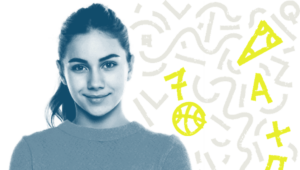Time for More Simulations in Class & On Tests

John Behrens is an assessment guy that doesn’t like to talk about items. “Items pose questions and have specific answers.” Behrens adds, “Items don’t tell us much about the learner, items are a relic of the pre-automated world.”
John starts with what behavior he wants to see in the world and then figures out how to capture it. The digital world has an activity paradigm. John talks about work product, observables, and user-records rather than items. Activities have features, not necessarily right answers. Activities provide lots of observable data points.
Behrens, now at Pearson, is the former instructional lead of Cisco Academy where he ran what may be the world’s largest classroom. They administer about 40,000 simulation-based assessment weekly (see No Excuse for Sucky Items, an interview with John).
John spoke about the use of simulation at a Washington DC conference on Technology Enhanced Assessments produced by the K12 Center at ETS.
“There is a social negotiation around every assessment,” said Behrens. Compared to other prompts, simulation has some benefit in trying to get people to “act as if”—as if it mattered, as if they were a scientist, as if they managed a network.
Compared to other test items, simulations offer fewer, longer, more connected tasks. Perhaps most useful, they allow multidimensional rather than unidimensional data collection and student feedback.
Phet, a family of science sims from CU, was on display in the exhibition space. I walked over to the ASSISTments and saw Phet assignments running with an Edmodo backchannel.
Pearson, CTB, and ETS were all demonstrated their auto essay scoring which can easily be incorporated into big projects and sims. More tomorrow including my reflections on how the move to digital will change teaching, learning and assessment.
Disclosure: Pearson is an LP in Learn Capital where Tom is a partner





0 Comments
Leave a Comment
Your email address will not be published. All fields are required.